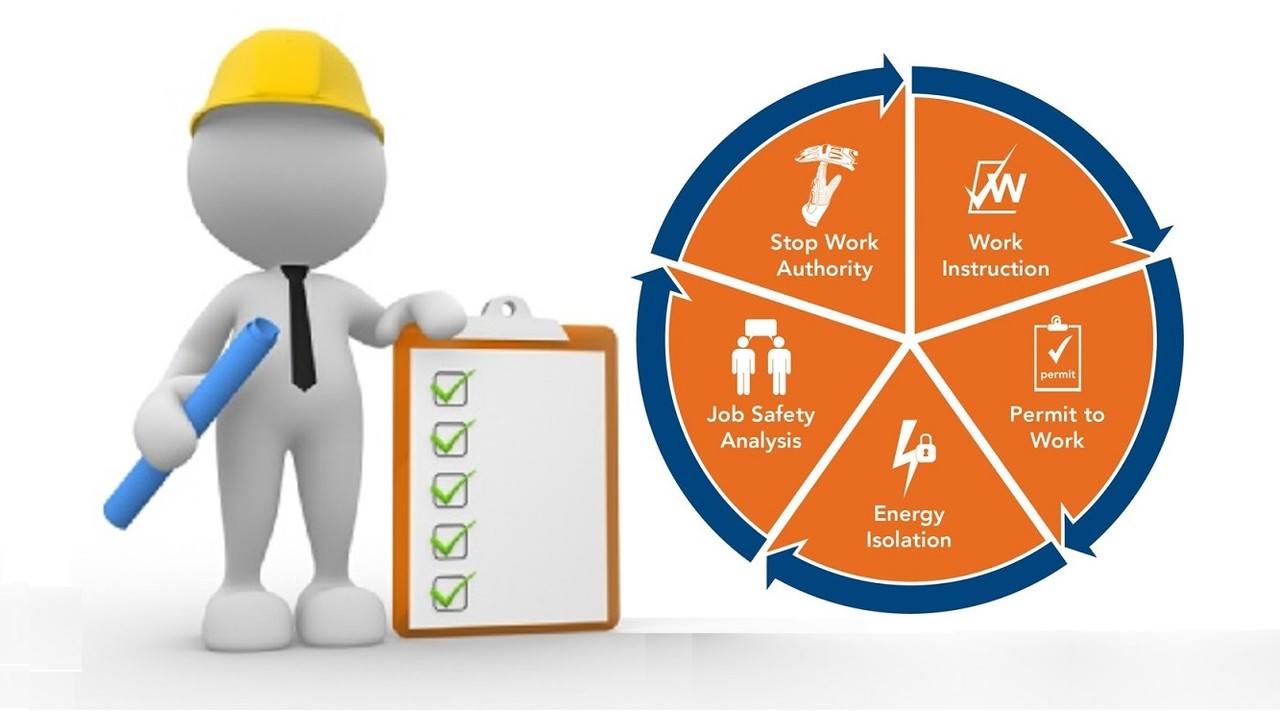
How to develop procedures for Safe System of Work
Introduction
First, let's discuss about what is it a Safe System of Work - there is no a single accepted definition but can be considered as a system of methods of performing tasks that minimize the risks associated with tasks, also can be considered as a set of procedures according to which work must be carried out.
Safe System of Work are divided in two categories, informal and formal. Informal include verbal instructions, list of what to do and what to not do, accepted good practice. Formal include standard operating procedures, method statement and permit to work.
The components of a safe system of work are procedures that results from a systematic examination of a working process, that identifies hazards and specifies work methods designed either to eliminate the hazards or controls and minimize the relevant risks.
How to develop an SSW procedure
When developing your safe systems of work, consider how the work is carried out and the difficulties that might arise and expose your workers to risk. Then develop a set of procedures detailing how the work must be carried out to eliminate or minimize the risk of accident or injury. Five steps to develop an efficient Safe System of Work procedure are: assess the task, identify the hazards, define safe methods, implement the system, monitor the system.
Systems of work must be communicated and understood by the relevant employees. The detail of the system of work, for example, whether it is oral or written will depend on the level of risk and the complexity of the work involved. For example, high risk activities where there is a risk of serious injury or death, will need to have documented systems of work which are strictly supervised and enforced.
Regularly review your systems of work to ensure that they still eliminate or minimize risk and revise as necessary.
How efficient is it
The legislation requires employers to provide systems of work that are planned, organized, performed, maintained and revised as appropriate so as to be, so far as is reasonably practicable, safe and without risk to health. But a company that really care about the safety of his employees will not limited only to legal requirements, will go further and will consider that the safe systems of work shows its efficiency where, with commune measures, hazards cannot be eliminated, and some risks still exists.
A large percentage of accidents occur due to lack of or failure in systems of work. Implementing of a safe system of work is an important part of safety, but the implementation must be done with responsibility not superficial, otherwise can happen like in the image below. Safe Systems of Work can reduce or eliminate exposure to hazards, but they must be strictly followed.

No Surprise - No Accident
5yRules, procedures and checklists are just sticking plasters attempting to cover the gaping wound of deficient system design. The fact that there is a rule or procedure in place doesn't make the system any less lethal only redesigns can do that.
Russell Prince
5yLet us also not forget that apart from the comments that Tadio has made we should also consider the people, who we expect to undertake the systems that we develop. We should involve the employees in the risk assessment of an activity and the subsequent development of the safe systems of work, as they are the ones that have “local knowledge”, but also, they are the ones who are going to follow the systems that we wish implement. In doing this it allows us to empower them, involving them and getting them to, “buy in” to the system which in turns helps in the implementation of the systems of work. We should also consider the employees and their anatomical, physiological and physiological fit when developing the system of work, as not considering this, often leads to individuals having issues with one or more aspects of these “fits” (don’t forget - we are all different) and therefore finding an alternative approach to the the system (not following the system that has been defined), thus potentially putting themselves at risk. Cont....